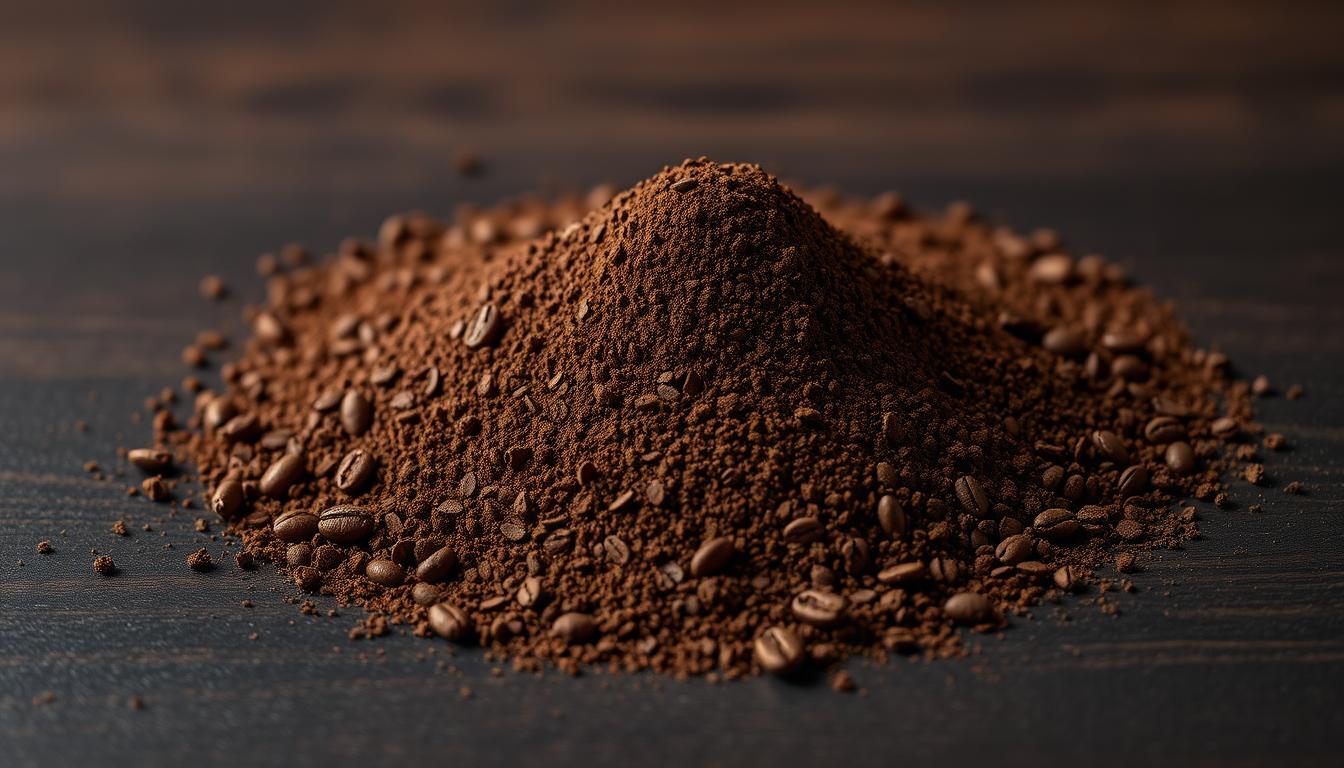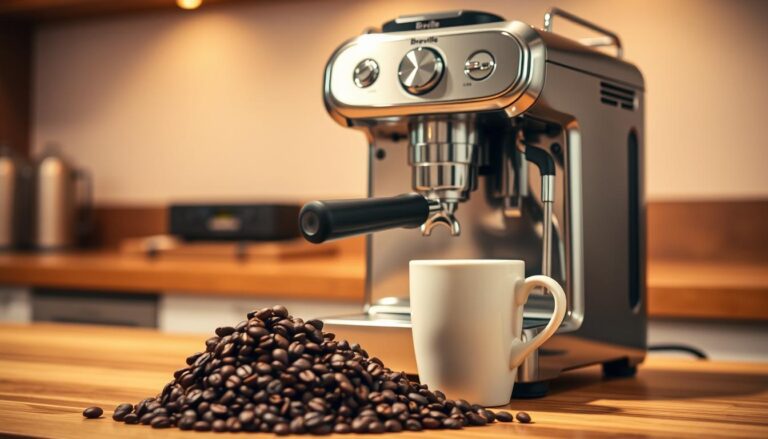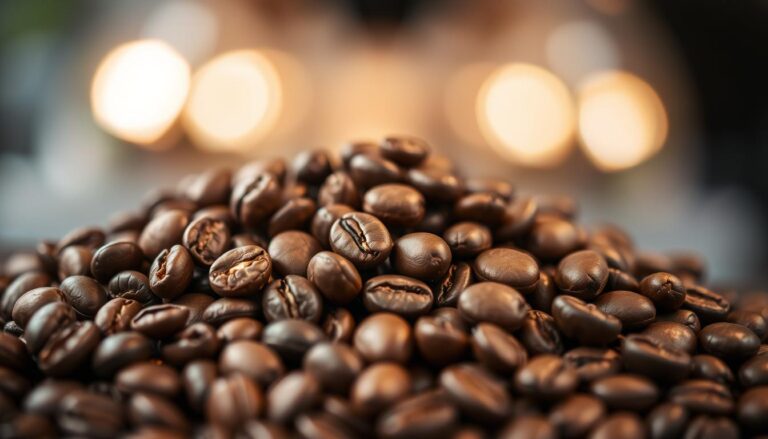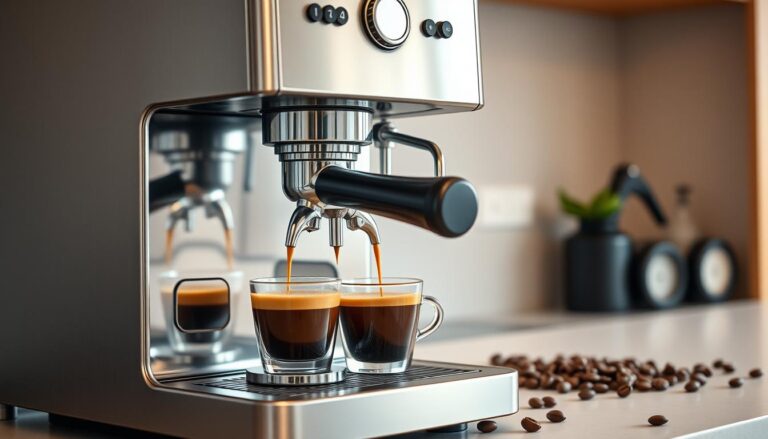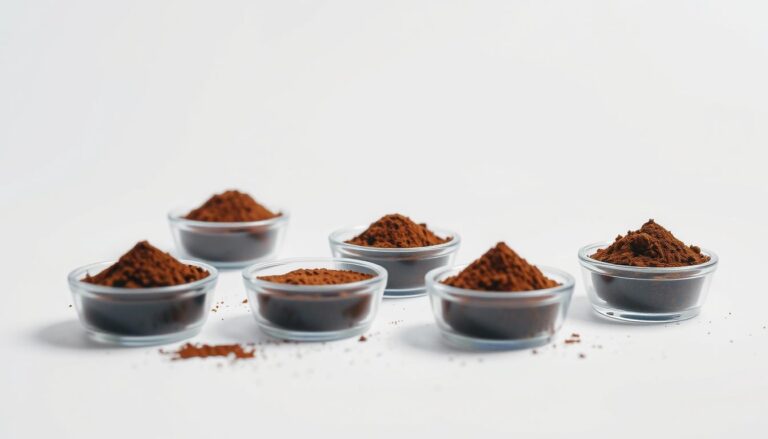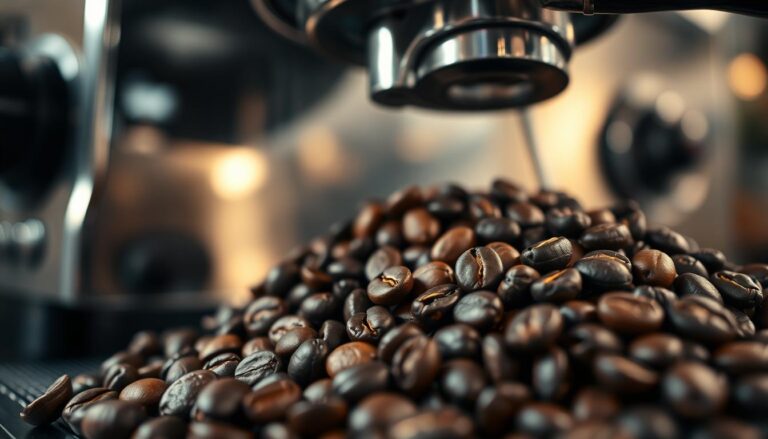Ever thought about using your regular coffee grounds in an espresso machine? It’s a question many coffee fans ask. They want to know if it can make their coffee as rich as espresso. While it’s possible, getting that perfect crema and bold taste might be tough.
In this section, we’ll explore if using coffee grounds in an espresso maker can improve your coffee. Or if sticking to espresso-specific grounds is the way to go.
Espresso Machines
Espresso machines are made to brew strong coffee. They use hot water and high pressure to extract flavors from ground coffee. This makes a rich, bold espresso, key in many coffee drinks.
What is an Espresso Machine?
An espresso machine makes espresso by extracting coffee flavors. There are many types, from manual to fully automatic. Each has its own features, catering to different coffee lovers.
How Espresso Machines Work
Espresso machines work by applying pressure and controlling temperature. The process starts with ground coffee in the portafilter. Then, hot water is pushed through at 9 bars of pressure.
This pressure and temperature are key for getting the espresso’s rich flavors. Knowing how they work helps us appreciate the art of making espresso.
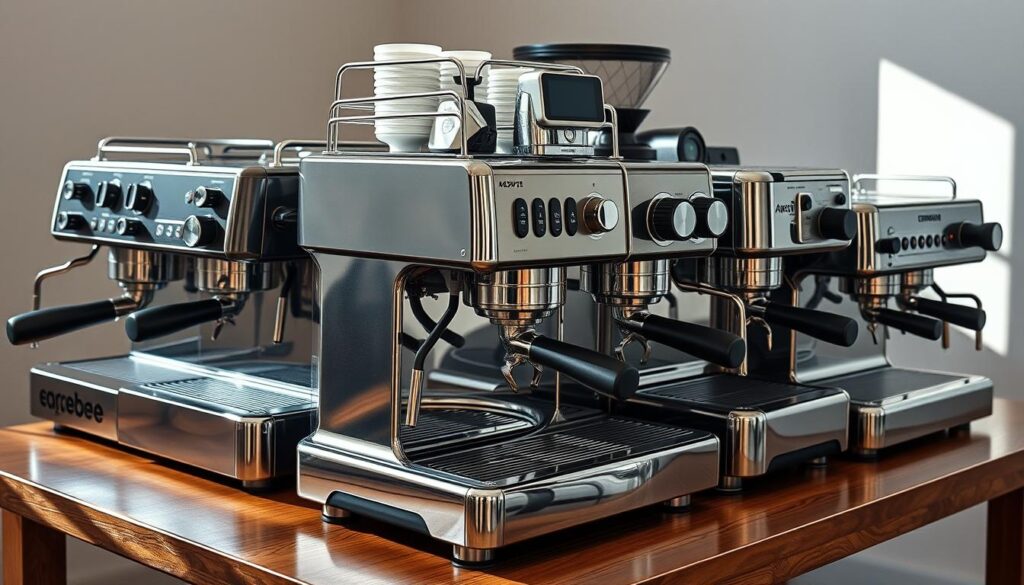
Types of Coffee Grounds
Choosing the right coffee grounds is key to a great espresso. Freshly ground coffee and pre-ground options have different effects on taste. Knowing the difference helps get the best flavor from your espresso machine.
Freshly Ground vs. Pre-Ground
Fresh coffee makes your espresso taste better, with more vibrant flavors and smells. It keeps oils and compounds that add to the taste. Pre-ground coffee, on the other hand, loses these over time.
While pre-ground coffee is easy to use, it can’t match the taste of fresh coffee. A good grinder lets you control the grind size. This ensures your espresso is perfectly made.
The Importance of Grind Size
The grind size is very important for espresso. A fine grind is needed for the right pressure and extraction. If it’s too coarse, the water flows too fast, making the espresso weak.
An overly fine grind can make the espresso too bitter. It’s important to have a uniform grind size. This avoids these problems and makes your espresso taste better.
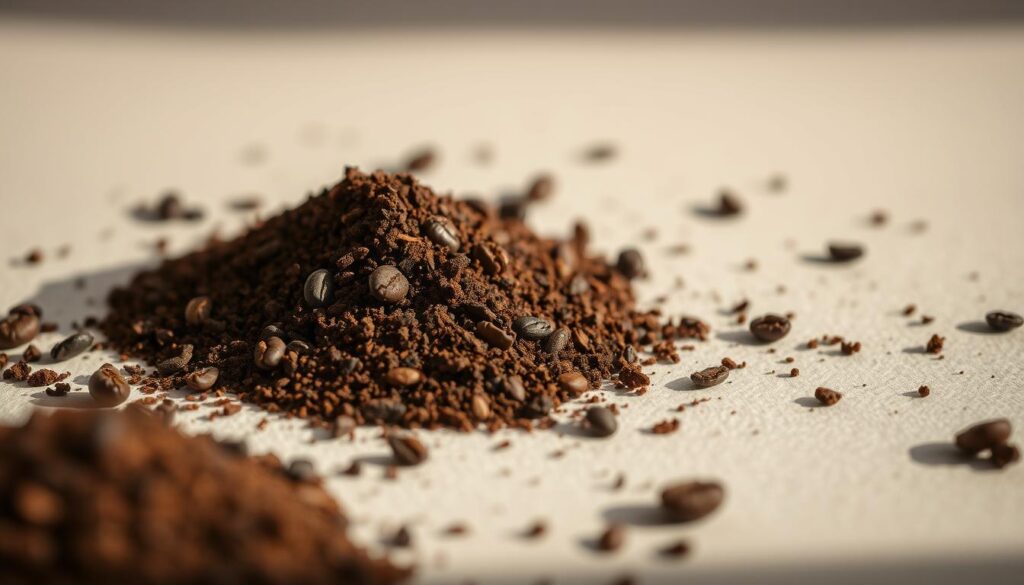
| Type of Coffee | Flavor Profile | Recommended Grind Size |
|---|---|---|
| Freshly Ground Coffee | Rich, complex flavors | Fine |
| Pre-Ground Coffee | Flat, less aromatic | Medium to Fine |
Can You Use Coffee Grounds in Espresso Machines?
Using regular coffee grounds in an espresso machine might seem simple. But, it can lead to unexpected results. These issues can change the taste and crema of your espresso. Espresso machines are made for a specific grind, and other grounds can cause problems.
Common Misconceptions
Many think any coffee ground works in an espresso machine. But, this overlooks the need for espresso machine grounds compatibility. Espresso needs a finer grind than regular coffee makers. Using coarser grounds can cause weak extraction and unbalanced flavors.
Risks of Using Regular Coffee Grounds
Using regular coffee grounds in an espresso machine can be risky. The coarser grind might make your espresso weak or sour. This is because the machine can’t extract flavors well. You might also get bitter notes if the extraction time is too short. These problems show why it’s key to know the right grind for your machine.
| Type of Coffee Grounds | Flavor Outcome | Extraction Quality |
|---|---|---|
| Fine Grounds | Rich, well-balanced flavor | Optimal extraction |
| Regular Ground | Weak, potentially sour | Poor extraction |
| Coarse Grounds | Bitter, over-extracted | Suboptimal extraction |
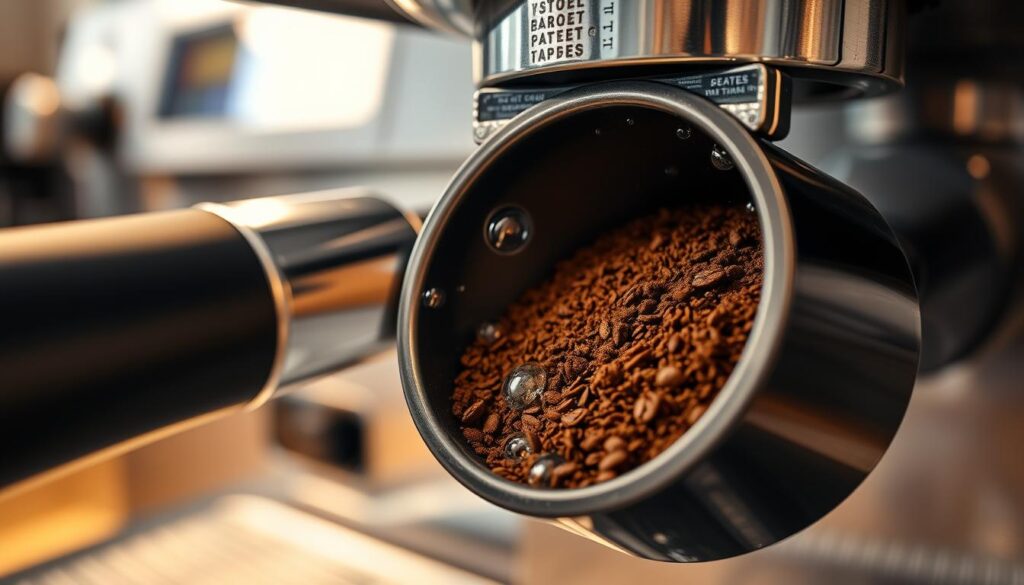
Best Practices for Using Coffee Grounds
Using ground coffee in your espresso machine is all about the best practices. The right coffee and grind size are key to a great cup. They make the flavor better and the brewing smoother.
Choosing the Right Type of Coffee
The coffee you pick affects the taste a lot. A mix of Arabica and Robusta beans offers a good balance. They bring sweetness and strength together. Choose coffee that’s been roasted recently for the best flavors.
Quality beans are essential. The taste depends a lot on where they come from.
Optimal Grind Size for Espresso
Choosing the right grind size is important for espresso. You want it as fine as table salt for even brewing. This ensures the water flows through well, bringing out the flavors.
Here are some tips for the best results:
- Use 18 to 20 grams of coffee for a double shot.
- Tamp the grounds firmly and evenly for better extraction.
- Try different grind sizes to see how it changes the taste and brew time.
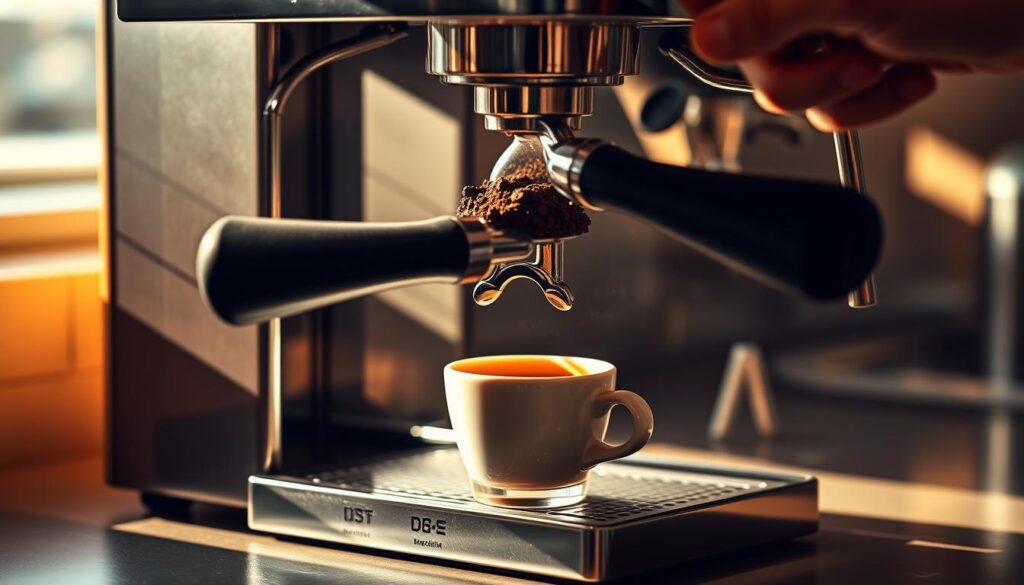
Cleaning Your Espresso Machine
Keeping your espresso machine in top shape is key. Regular cleaning helps your coffee taste rich and full, without bitterness. Knowing how to clean your espresso maker well can make your coffee experience better.
Why Cleaning is Essential
As time goes by, coffee oils and residues can clog your machine. This affects your coffee’s taste and the machine’s performance. Cleaning regularly keeps your espresso tasting great and your machine working well. If you don’t clean it, you might face expensive repairs or need a new machine.
How to Properly Clean Your Machine
There are different cleaning steps based on how often and what you need to clean. Here’s a simple guide to keep your espresso machine in good shape:
- Daily Cleaning: Rinse the portafilter and baskets with hot water after each use. Use a soft cloth to clean the machine’s outside.
- Weekly Cleaning: Use a blind filter and cleaning agent to backflush your machine. This clears out any blockages in the brewing group.
- Monthly Cleaning: Take apart the machine and soak its parts in cleaning solution. Always check your machine’s manual for the right cleaning products.
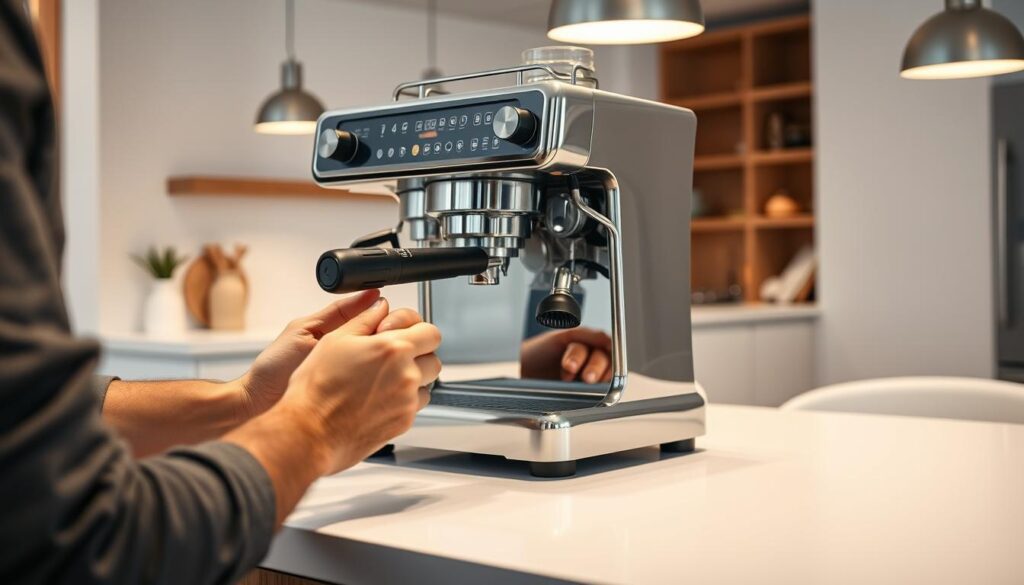
| Cleaning Frequency | Task | Tips |
|---|---|---|
| Daily | Rinse portafilter and wipe down surfaces | Use hot water for rinsing |
| Weekly | Backflush with cleaning agent | Follow instructions for dosage |
| Monthly | Soak removable parts | Refer to the manual for cleaning solutions |
By sticking to a cleaning routine, you’ll enjoy delicious espresso and prevent machine problems. Spend the time needed to clean your espresso machine for the best coffee moments.
The Benefits of Using Quality Coffee
Choosing high-quality coffee changes your espresso and your coffee time. It makes your drink better and your coffee time better too. The choice of beans is key for coffee lovers.
Flavor Enhancement
Quality coffee makes your espresso taste better. Fresh, specialty beans have a rich flavor that regular coffee doesn’t. Every sip brings out the unique taste and smell of the beans.
This makes your espresso more enjoyable and satisfying.
Consistency in Brew
Quality coffee means your espresso is always the same. Fresh beans make sure the coffee is extracted evenly. This is important for a perfect shot.
Lower-quality beans can make your espresso unpredictable. This can be frustrating if you want a reliable espresso. Quality coffee means better taste and reliable brews.
Troubleshooting Common Issues
When you brew espresso, you might face taste or performance problems. Knowing how to fix these issues is key to keeping your machine running well. Here, we’ll look at how to tackle common espresso taste problems and machine performance issues.
Bitter or Sour Tastes
Bitter or sour tastes in your espresso can come from a few sources. The wrong grind size can cause over- or under-extraction, affecting taste. For the best flavor, use a fine grind made just for espresso.
The quality of your coffee beans is also critical. Bad beans can make your espresso taste off. Also, make sure your machine’s brew temperature and pressure are just right.
Machine Performance Problems
Dealing with performance issues in your espresso machine is important for good coffee. If your machine doesn’t pressurize well or takes too long to heat, it might need some TLC. Cleaning the group head and checking the water source can help.
Regularly check your machine’s parts for wear and replace them when needed. This keeps your espresso machine running smoothly. By staying on top of maintenance, you can avoid many common problems.
Final Thoughts on Coffee Grounds in Espresso Machines
Understanding how coffee grounds affect espresso machines is key to making great espresso. Trying different coffee types and grind sizes can help you find your favorite flavor. With practice, you’ll discover the perfect mix that makes your espresso stand out.
Making the Best Brew
When aiming for the best espresso, consider the coffee’s origin and blend. Each bean adds its own flavor, making your espresso richer. Adjusting the grind size and trying new coffees can take your espresso to new levels, revealing a world of flavors.
Exploring More Coffee Options
Your espresso-making journey should always be about trying new things. Exploring different coffees keeps your taste buds excited and deepens your love for espresso. Remember, making great espresso is both a science and an art, encouraging you to explore both as you improve your skills.

